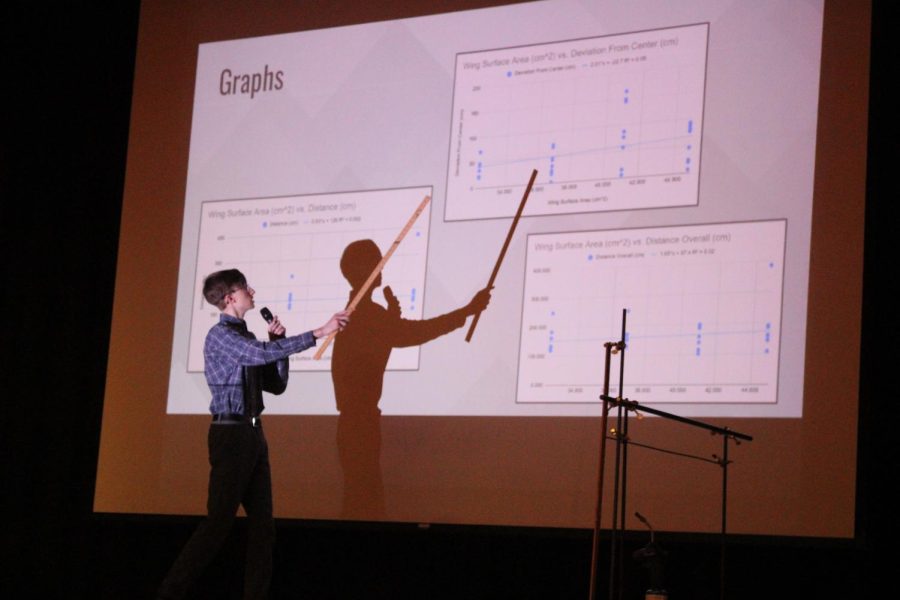High school holds sixth annual science conference
Sophomore Logan Larrick points to the graphs he completed on his paper airplane experiments for his long-term.
On May 13, Physics teacher Dr. Brian Wargo, along with sixth grade science teacher Ms. Jeanine Ging, held the sixth annual science conference for students in Physics I through III, alumni within science fields and a selection of sixth graders to present their long-term projects.
Students work throughout the whole year creating a presentation based on an idea they had or one that is given to them. The presentations are based on original research and experiments performed by the students. Students go through multiple series of experiments, determining protocols and finding methods to answer their questions.
Wargo invites a variety of alumni to present projects they have been working on. Each year, he also includes a keynote speaker to speak to the students at the end of the conference. This year, 2005 graduate Katlyn Meier presented. Meier is currently an assistant professor of Biophysical Chemistry at the University of Miami. Meier, along with 16 other Freedom graduates, had different topics to talk to the students about.
“My presentation involved an explanation of scanning electron microscopy and my research with an electron microscope,” 2021 alum Josiah Dubovi said.
Dubovi had also explained his research on analyzing the crystalline structure of an Al-Cu-Fe structure. Alumni presentations involved a variety of topics, including some based on chemistry, physics or biology.
Physics and Physical Science students had spent strenuous hours completing their long-terms. They had deadlines throughout the year where they had to be at a certain point within their projects to receive full credit. Wargo assists them in coming up with ideas or even trying to complete their experiments.
“My long-term involved using a 3D printed paper airplane launcher or crossbow to test how the width and angle of a paper airplane affects its performance,” sophomore Logan Larrick said.
Larrick had worked on determining what can affect the way a paper airplane flies. He had designed a 3D printed launcher to ensure that each time he flew the plane, it was soaring at the same rate.
Each long-term presented by students asked a unique question with different experimental data involved. They were able to work with Wargo to determine a question they have always wanted to know the answer to, based on their scientific interests.



